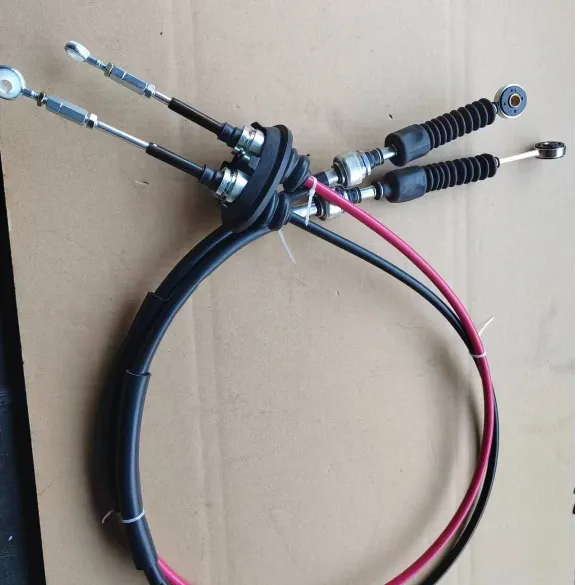clutch cylinder hose
Understanding Clutch Cylinder Hose Importance, Function, and Maintenance
The clutch cylinder hose is a crucial component in the hydraulic clutch system of many vehicles. This hose connects the master cylinder to the slave cylinder, facilitating the transfer of hydraulic fluid that enables the actuation of the clutch. Understanding the role of the clutch cylinder hose, its importance, and how to maintain it can prevent costly repairs and ensure smooth vehicle operation.
Importance of the Clutch Cylinder Hose
The primary function of the clutch cylinder hose is to transport hydraulic fluid under pressure. When a driver engages the clutch pedal, the master cylinder generates pressure in the hydraulic fluid, which then travels through the hose to the slave cylinder. The slave cylinder uses this pressure to disengage the clutch, allowing for smooth gear changes.
If the clutch cylinder hose is compromised—whether by a leak, crack, or blockage—the entire hydraulic system can fail. This may lead to difficulties in engaging or disengaging the clutch, resulting in a reduced ability to shift gears smoothly. In extreme cases, a malfunctioning clutch system can cause unsafe driving conditions and potential vehicle stalls.
Symptoms of a Failing Clutch Cylinder Hose
Drivers should remain vigilant for signs of a failing clutch cylinder hose. Some common indicators include
1. Fluid Leaks A visible leak around the hose is one of the most obvious signs of failure. If you notice fluid pooling beneath your vehicle, it could be hydraulic fluid leaking from the clutch cylinder hose.
2. Soft Clutch Pedal If the clutch pedal feels softer than usual or sinks to the floor without resistance, it may indicate a loss of hydraulic pressure due to a leak or blockage in the hose.
3. Difficulty Shifting Gears Struggling to shift gears, experiencing grinding noises, or feeling resistance while changing gears can signal that the clutch system is not functioning correctly, potentially due to an issue with the cylinder hose.
clutch cylinder hose

Maintenance and Replacement
Regular inspection of the clutch cylinder hose is essential for maintaining a healthy vehicle. Visual checks should be performed to look for cracks, wear, and leaks. Additionally, drivers should be attentive to the feel of the clutch pedal and any changes in performance.
If any damage is detected, or if symptoms of a failing clutch arise, it is crucial to replace the clutch cylinder hose immediately. Replacement is generally straightforward but can vary in complexity depending on the vehicle model. If you are not experienced with vehicle maintenance, seeking the assistance of a professional mechanic is advisable.
In most cases, replacing the clutch cylinder hose involves
1. Lifting the Vehicle Safely lifting the vehicle to access the hose.
2. Removing the Old Hose Disconnecting the damaged hose from both the master and slave cylinders.
3. Installing the New Hose Connecting the new hose securely, ensuring that all fittings are properly tightened to prevent leaks.
4. Bleeding the Hydraulic System After installation, it may be necessary to bleed the hydraulic system to remove any air pockets, ensuring it operates correctly.
5. Testing Finally, testing the clutch operation to ensure that everything functions smoothly.
Conclusion
The clutch cylinder hose is a vital part of a vehicle’s hydraulic clutch system, playing a significant role in ensuring smooth gear shifts and overall drivability. Regular inspection, prompt attention to symptoms of potential issues, and timely replacement can help avoid more extensive damage and costly repairs. By understanding the importance of this component, drivers can maintain their vehicles more effectively and ensure safe driving conditions. Remember, taking care of small issues today can prevent larger problems down the road.
-
Workings of Clutch Pipe and Hose SystemsNewsJun.04,2025
-
The Inner Workings of Hand Brake Cable SystemsNewsJun.04,2025
-
The Secrets of Throttle and Accelerator CablesNewsJun.04,2025
-
The Hidden Lifeline of Your Transmission Gear Shift CablesNewsJun.04,2025
-
Demystifying Gear Cables and Shift LinkagesNewsJun.04,2025
-
Decoding Clutch Line Systems A Comprehensive GuideNewsJun.04,2025
